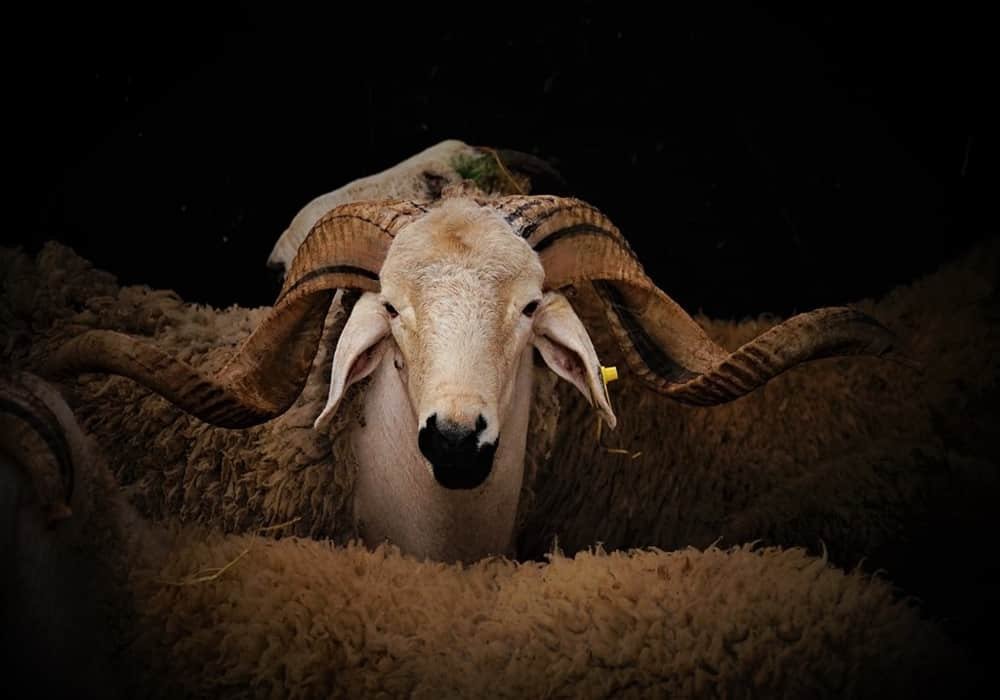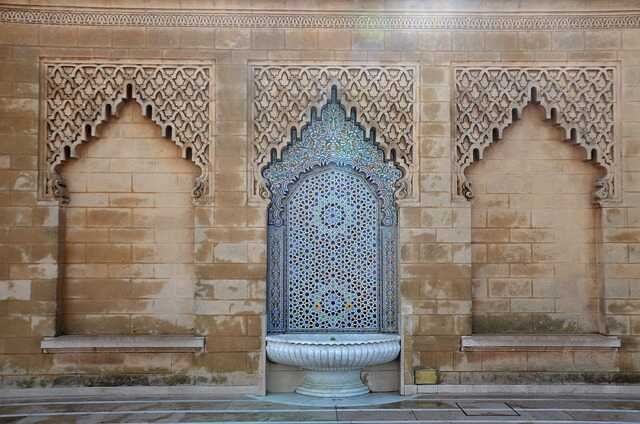Eid al Adha
Eid al Adha commemorates, according to Muslim tradition, the sacrifice that God asked Abraham to test his faith. This feast, bringing together families, is an important moment of sharing and conviviality.
Eid al Adha in Arabic , عيد الأضحى [ ‘id el-Adha ]), which could be translated as celebration of the Sacrifice.
Eid al Adha is the commemoration of the sacrifice and marks the end of the Hajj, the annual pilgrimage to Mecca. Hajj is the Muslim pilgrimage, which Muslims are required to undertake at least once in their lifetime, provided that they are in good health and can afford it. Aid-al-adha is the feast of sacrifice, which is celebrated by all Muslims, not just those who perform Hajj.
There are two key Eid’s (Celebration Festivals) in Islam
Eid-ul-Fitr, which signifies the completion of the Holy Month of Ramadan; and Eid-ul-Adha, the greater Eid, which follows the completion of the annual Hajj pilgrimage, at the time of Qurbani (sacrifice).
Although Eid-ul-Adha has no direct relation to the Hajj Pilgrimage, it is but a day after the completion of Hajj and therefore has significance in time.
Read also: How to Pray Eid Prayers and General Rituals
The origins of Hajj
According to the Quran, God told the prophet Ibrahim to take his wife Hajira and his son Isma’il on a trip to Arabia. He then told Ibrahim to leave Hajira and Isma’il with food and water.
Running out of water, Hajira ran up and down over two hills, Safa and Marwah, in search of water. Finding no water, she prayed to God and water sprang from the ground. This water source is called the Zamzam well.
When Ibrahim returned, he was ordered to build the Ka’aba as a shrine dedicated to Allah where worship would take place.
Over time, people began to worship idols in the Ka’aba instead of the one God, Allah. However, Muhammad restored the Ka’aba to its original function when he converted Mecca to Islam.
How is Eid Al-Adha going?
He must do two prayer units. For the first unit, make seven takbirates (Allahu Akbar) with the sacralization takbir, the one at the beginning of the prayer. That is to say Allahu Akbar six times. Then recite the Fatiha and a desired surah in the Koran.
Why do we slaughter a sheep for Eid?
In remembrance of Ibrahim’s devotion to his God, Muslim families sacrifice an animal (the sheep that is six months old or the goat that is two years old or the bovine that is two years old and has entered the third lunar year or the camel who has completed five years) according to the rules in force.
Muslim Tradition for Eid al Adha
Animal sacrifice
It is customary for devout Muslims to sacrifice an animal to celebrate the festival if they can afford it financially. The meat of the animal is eaten in the family circle, which usually includes relatives and close friends (neighbors); part of the meat is traditionally distributed among the poor and hungry. There is, however, a disagreement among Muslim scholars about the duty of this sacrifice (ḍaḥīya). While some scholars, such as al-Kāsānī, categorized sacrifice as compulsory (wāǧib), others see it only as an “established custom” (sunna muʾakkada). It is customary to give best wishes to all friends and relatives at the Festival of Sacrifice and to give them some of the meat too. Sometimes people simply sacrifice to thank God.
Depending on regional availability, sheep , but also other domesticated animals such as goats, cattle, camels, are slaughtered in arid regions or water buffalo as in Indonesia. In general, only artifacts are ritually slaughtered, with the exception of pigs, which are considered unclean.
Solemn prayer
Both on the first morning of the Feast of the Sacrifice and on the first morning of the Feast of the Breaking of the Lent , the mosque or – if available – a specially designated open space (musallā or eidgah) is visited to perform the common and special prayer (salat) of this feast day, which of two rak’at there and the special feature that the response (khutbah) – usually through the Imam – after the prayer is done, and not, as at Friday prayers, beforethe prayer. Participation in prayer is compulsory for the Sunnis; Exceptions apply to believers who are on the pilgrimage to Mecca .
Visiting relatives
A visit to the mosque is usually followed by a visit to the cemetery to commemorate his deceased relatives and acquaintances and to read Koran verses and prayers for them, which, however, does not correspond to the Sunnah of the Prophet, but is a tradition in the course of the Celebration has established in different countries. The rest of the day is used to visit relatives and acquaintances. Various dishes and drinks are usually offered in large groups. You give gifts to each other and often also to those in need. Both men and women put on particularly nice or new clothes. The house is also completely tidied up and tidied up.
Children
It has become common practice that gifts are given to children during the festival of sacrifice; In larger cities there are also fair-like children’s amusements with carousels and cotton candy, etc.
Sources: PinterPandai, Muslim Aid
Photo credit: Wikimedia Commons


